“Blood Lions” – Cannot Be Forgotten
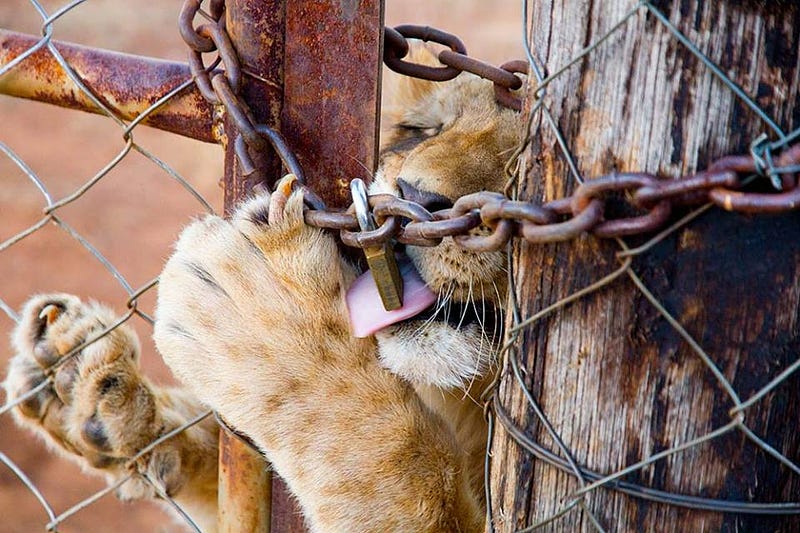
Alion leans down to feast on a flab of meat that was just thrown at him. It’s early afternoon, the African sun is beaming down…Suddenly, out of nowhere, rifle shots go off. A first bullet pierces the lion, then the second comes. The lion turns around, twists his body, the power of the shot lifts him up into the air. But he is still alive, shocked and writhing in pain in the rising cloud of dust…It takes three more bullets for the body to fall to the ground…
A cruel, merciless sniffing out of a living, breathing life, all done for a fleeting joy of securing a trophy.
“Blood Lions”, a documentary narrated by an environmental journalist and a safari operator, Ian Michler, takes the audience deep into the world of canned hunting. It reveals an interconnected system that imprisons lions and breeds them in captivity, only to have them later dispatched to be shot by trophy hunters.
‘Canned hunting’ was first exposed in 1997 by the Cook Report, a British TV program; it showed a captive lioness being shot in front of her cubs. Canned hunting simply means that a lion, bred in captivity and habituated to humans, is placed in a confined area with no means of escape, so he can easily be shot by a hunter. A hunter is led to predetermined place where, after some waiting and baiting, the whole business transaction is consummated. Successful hunting is almost guaranteed, efficient, and relatively cheap. Even a hunter who is a lousy shot would get his trophy. The whole hunting adventure can be completed over a weekend at the price between $6 000 and $20 000. In contrast, an average ‘traditional’ trophy hunting costs approximately $76 0000 and requires a three-week commitment of staking animals across the savanna. That is why, with canned hunting, the ‘wilderness hunting experience’ can, indeed, be packed into a ‘pill’ at an affordable price. Time is not wasted and money is saved. Not surprisingly, the business is booming. This multimillion-dollar industry thrives today in South Africa with about 200 farms and breeding facilities holding somewhere between 6 000 and 8 000 predators in captivity. Over 800 hand-reared lions are shot annually by foreign hunters.
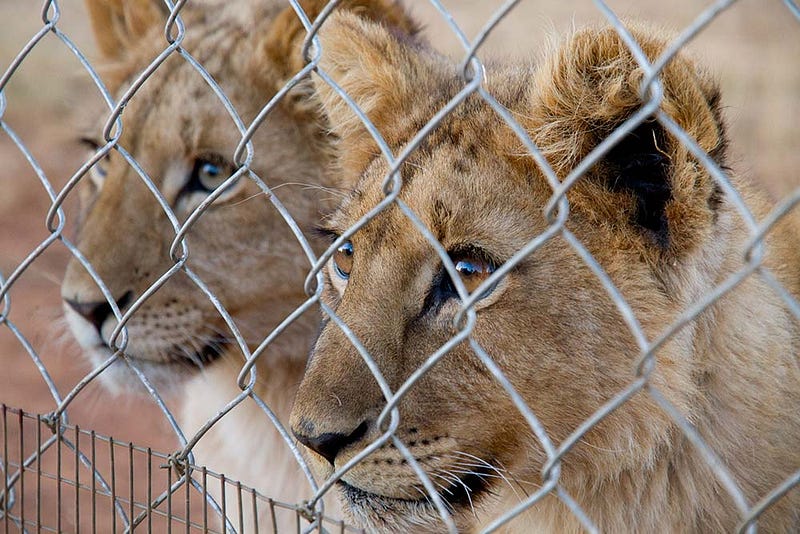
For a captive lion, the cruel journey commences soon after his birth. Tiny cubs are taken away from their mothers days after they have been born, which allows breeders to bring the female into oestrus again. Instead of giving birth every two or three years — as is the case in the wild — female lions are turned into breeding machines, producing cubs three or four times per year. In the process, they bodies become worn down, fatigued, stressed. The whole notion of motherhood is cruelly obliterated. The lionesses never get a chance to become mothers to their children, and to teach them how to live, how to hunt, how to discover the world.
And then the cubs, of course. They cry as they are torn away, pounding their legs in the air, their tiny bodies cowering in fear. It is as if they already knew that they will never know the warmth of a mother’s body, the adventure of an uninterrupted run, or the joy of the late afternoon cuddle. Or perhaps, yowling through the bars for their mothers, they also know that they’ve just entered a long, dark tunnel at the end of which a light comes in the form of death.
It is, ironically, the tunnel filled with both intentional and unintentional evil. The intentional one reveals itself in the horrific conditions in which snatched lions are kept and bred. Many of them are crammed into small enclosures that are left uncleaned for months, stinking of feces and rotting meat. Boredom and rage become palpable as groups of ravaged lions restlessly prowl the fence-line of their enclosures desperately waiting to be fed. The food thrown to them resembles nothing that lions would feast on in the wild. These are mostly chunks of cow carcasses, glistening in the sun and swarming with flies, that are never checked for the presence of any illnesses or antibiotics. There is no need for any of this, of course. A prospective hunter would be equally satisfied killing an ailing or undernourished lion, as long as a severed head looks impressive when mounted on a wall.
And then, there is unintentional evil. Indeed, one of the pernicious aspects of canned hunting is that it cynically uses human compassion and empathy for the benefit of cruel exploitation of lions. International volunteers who hope to make a difference in this world are pouring into breeding farms that claim to be sanctuaries and rescue centers. They are paying thousands of dollars to care for supposedly “orphaned” cubs that — as they are told — would be re-introduced into the wild. Understandably, they are thrilled to bottle feed, cuddle, and even sleep with lion cubs. What they are unaware of is that the very cubs they are helping to raise will end up as shooting targets for trophy hunters after their use for other purposes has been exhausted.
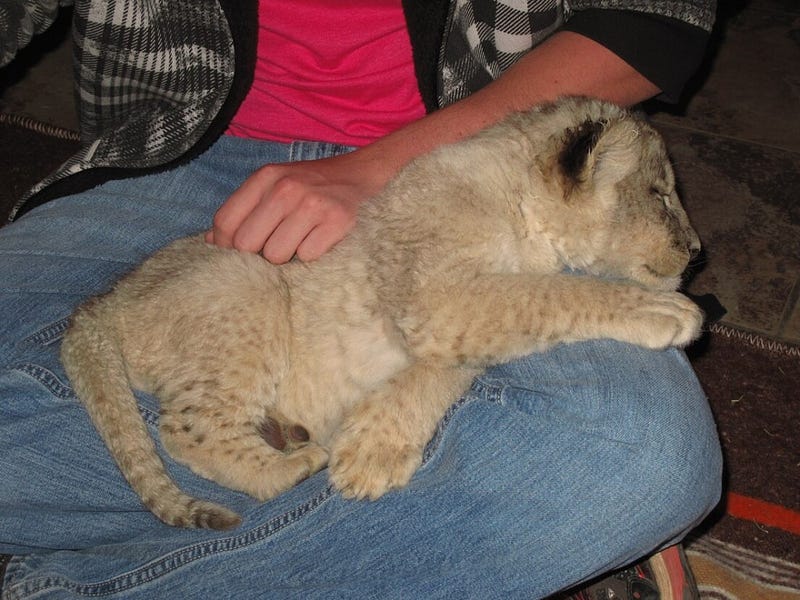
Shouldn’t they know better? Of course, they should. In the age of the unprecedented access to information, it is imperative for potential volunteers to check and double-check whether places housing wild animals are indeed genuine sanctuaries. There is no excuse for such ignorance. Not anymore. But then, again, true sanctuaries or rescue centers limit volunteers’ access to lions for the very reason of ensuring that these animals will remain wild. A sound ethical policy, certainty, but it also renders these places less attractive for paid volunteerism. And, so, in a terrible irony, a superficial human need to have a tactile contact with the wild animal steers the young and the naive away from the world of animal rehabilitation and into the world of animal exploitation.
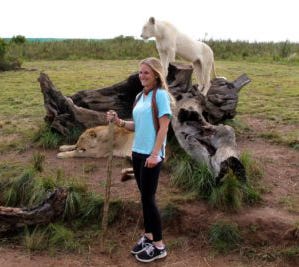
And then there are also passing tourists. They are lured into breeding facilities with a promise of having a unique wildlife experience while contributing to a good cause. For 50 or 60 dollars, they are offered a chance to ‘walk with lions’ and pose for pictures that would later be posted on Facebook pages. Excited at the prospect of such proximity to “wildlife”, these tourists fail – almost inexplicably – to see tangible sadness and listlessness in lions’ sedated bodies. Suddenly, in the darkened cinema theater, it is as depressing to watch the lions plod along on a narrow trail as it is to look at the faces of easily deceived people, waving hands and smiling into the camera. No, these walks have nothing to do with wildlife. There is no wildlife in sight. The drugged lions moving along with their heads dropped down, prodded by wooden sticks, have never known what it means to be wild.
Finally, when a lion is ready to become a trophy, a time to be killed arrives. Many guide outfitters to whom captive lions are sold help prospective hunters choose a target by posting photos with price tags below. With one click, the fate of a lion is sealed. Trophy hunters are satisfied with lions they get because, as far as they are concerned, farmed lions are better than truly wild ones. Their faces are not “scraped up” as they would be in the wild, a legacy of fighting over females and territories. They contain no life stories that nature always carves into animal bodies, no sense of experience or adventure. That’s okay, though. It’s better this way. Clean, manicured heads with manes not damaged by the savanna’s bush look more imposing on trophy hunters’ walls.
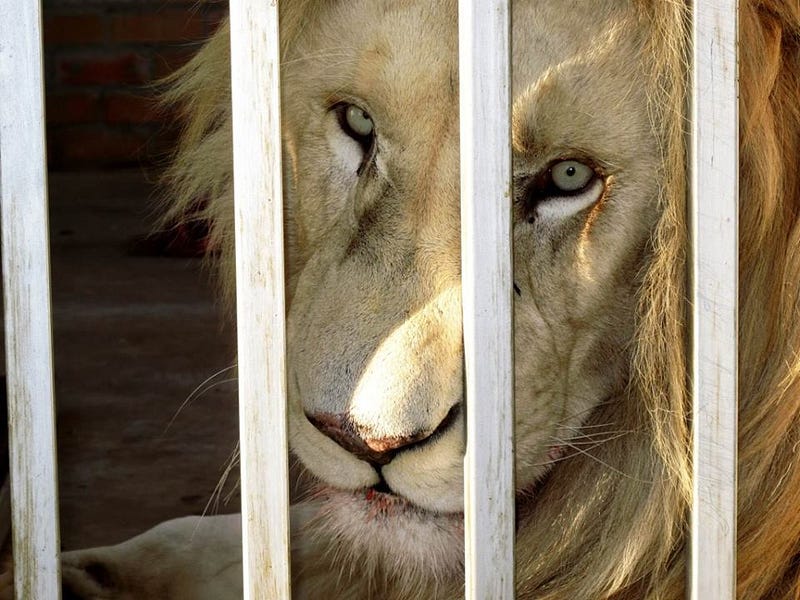
Is this where humans’ feasting on lions ends No, this is not. Being stuffed in a ferocious pose and mounted on a hunter’s wall do not mark the end of a farmed lion’s journey. True to the principle of maximum utilization, his body is taken apart and further commercialized. Now it’s time for the bones of the lion to bring profit. Due to dwindling tiger population and the Chinese government’s banning the trade of tiger parts in the early 1990s, lion bones have become a suitable replacement for those seeking fictitious medical cures. This is an ominous development. For the opponents of canned hunting, trade in bones is especially worrisome because it obviates the need for ensuring even the most basic welfare of captive lions. Certainly, genetically weak, sick, in-bred or even horrifically deformed lions are as good source for bones as their healthy counterparts.
Watching “Blood Lions” is a draining yet indispensable experience. Not the one to be forgotten. In a final consideration, the film also leaves one wondering about the nature of evil: its triviality and its inner workings. The film is remarkably restrained in explicitly commenting on the views that, to the filmmakers of “Blood Lions”, must be clearly appalling. Still, some insights come through. What becomes evident is that a few of those implicated in canned hunting feel uneasy about it, perhaps, even struggle with themselves deep down in recesses of their souls. Indeed, an attempt to squash cognitive dissonance emerges from some of the statements. Canned hunting, its proponents try to argue, prevents wild lions from becoming extinct and contributes to other conservation or research efforts: “This is conservation because if it wasn’t for hunters, that lion wouldn’t be there. He never would have been bred – at least he has a purpose in life”, one highly decorated hunters says. This is, of course, an utter fallacy aimed at the public and, perhaps, at one’s own conscience.
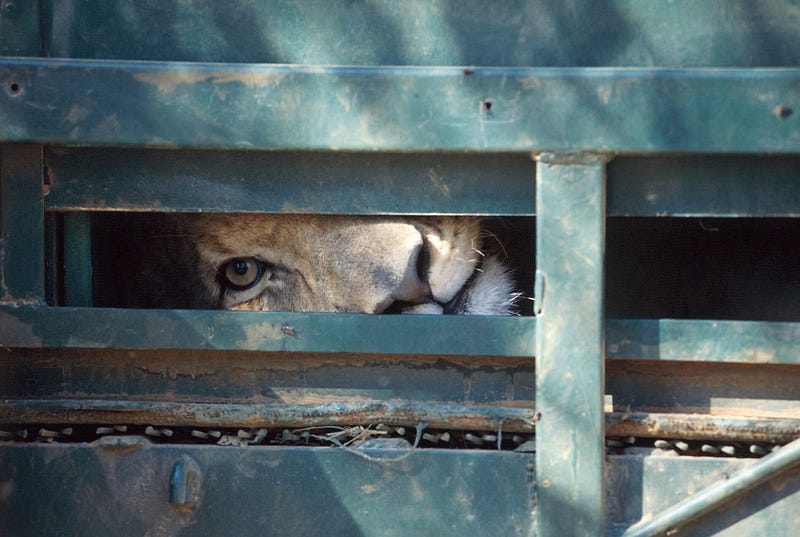
This is fallacy because, as one of the interviewed biologists states, it is unrealistic to use captive lions as source for repopulating or supplementing wild populations. Both behavioral and physical differences between captive and wild lions render their co-existence an utter impossibility. Hand-reared, captive lions lost their fear of people and ability to hunt. At the same time, a relentless breeding of lions has created a population of genetically inferior, inbred and sick animals that wouldn’t be able to survive in the wild. In one of the film’s most moving scenes, an older cub is trying to walk but can’t, his hind legs collapsing. Indeed, the tragedy of canned hunting starts long before the first bullet is fired. That is why it is a final act of cruelty — an ultimate desecration of nature — that the fate of captive lions is being sold to us as contribution for a ‘greater good of conservation’.
Is there no hope then? Perhaps, there is; people do change, some of them awaken. But such awakening demands transmuting private outrage into public pressure. It can happen. South Africa — its demons of apartheid bravely and peacefully discarded — deserves better. Some of the obstacles to banning canned hunting stem from a bureaucratic absurdity. Not wild enough to fall under the auspices of the government sanctioned conservation and too wild to warrant the basic protection of domestic animals, captive lions pace ceaselessly in the barbed wired limbo, born and bred for the trivial death. Indeed, the haunting curse of captive lions is partly brought on by their freakishness in the eyes of the rigid political system; a system that demands and can only tolerate a clearly defined demarcation between animal species. Those who defy this are cast in no man’s land. This absurdity cannot provide an excuse for the cruelty of canned hunting to carry on. Equally sprung from the loins of their mothers on the dry dirt of their African homeland, all lions are touched with dignity.
“Blood Lions”, an unsentimental and clear-eyed documentary, ends with life looking back at us. When asked why some hunters stop hunting, Ian McCallum, a psychologist and poet, says:
“It has something to do with the look in the eye of the animal. For the first time, that hunter sees himself in the eye of that other. And I think it is the beginning of seeing everything a little differently, after you put down that gun. When you stop trying to prove it, when you stop trying to demonstrate control, when you stop trying to demonstrate dominance in the world where you, in fact, are pretty small and damn lucky to be alive – It is in the eye of the prey that the shift of skin takes place that the barrel points the other way and you find yourself hunting in a new country.”
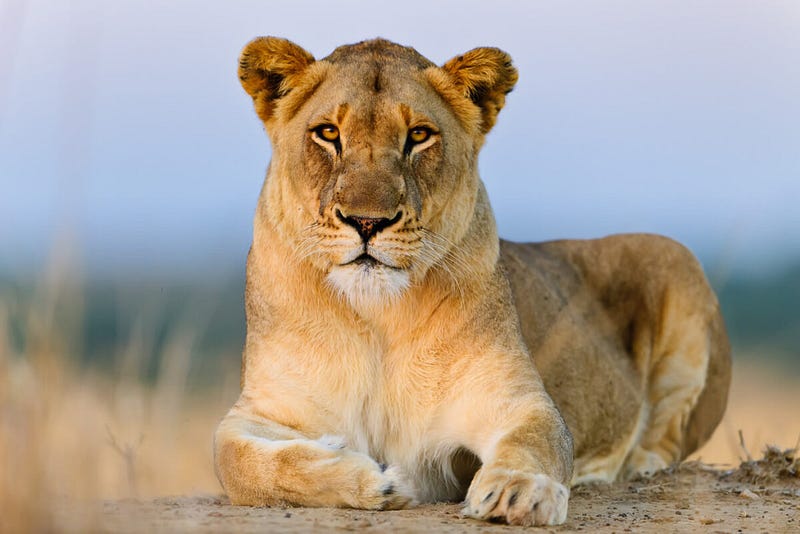
Get Involved – Take Action:
Please help make the voice of the lion heard:
Please go to www.bloodlions.org for more information about canned hunting and to learn about the campaign to bring an end to it at
http://www.bloodlions.org/the-campaign/
Check out a new Youth For Lions campaign that was recently launched by the young people of the world that exposes how the canned hunting industry uses cub petting, walking with lions and volunteering at lion farms for their benefits.
Go to – http://www.bloodlions.org/youth-for-lions/to see how you can contribute to this campaign.
See how else you can get involved at – http://www.bloodlions.org/get-involved/

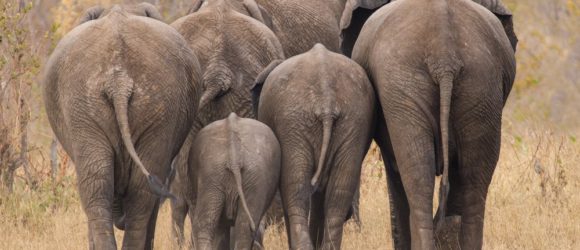
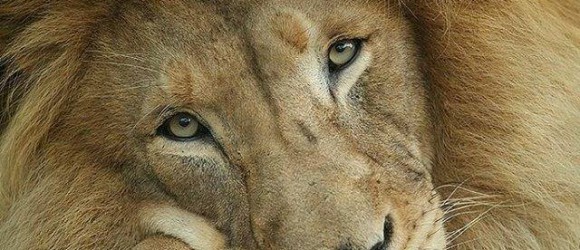
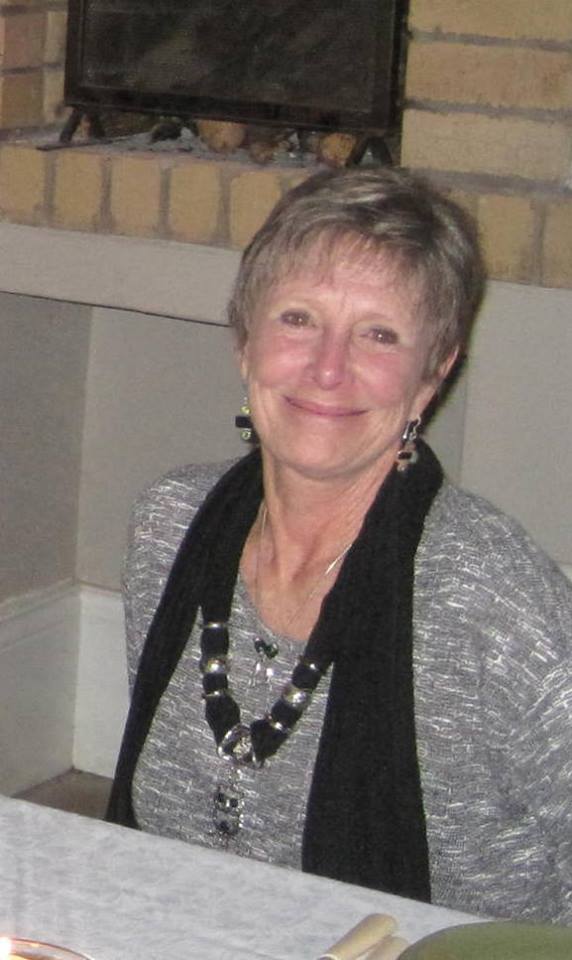
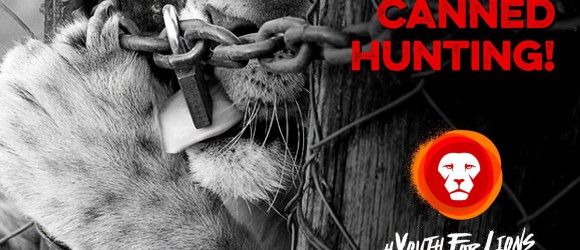
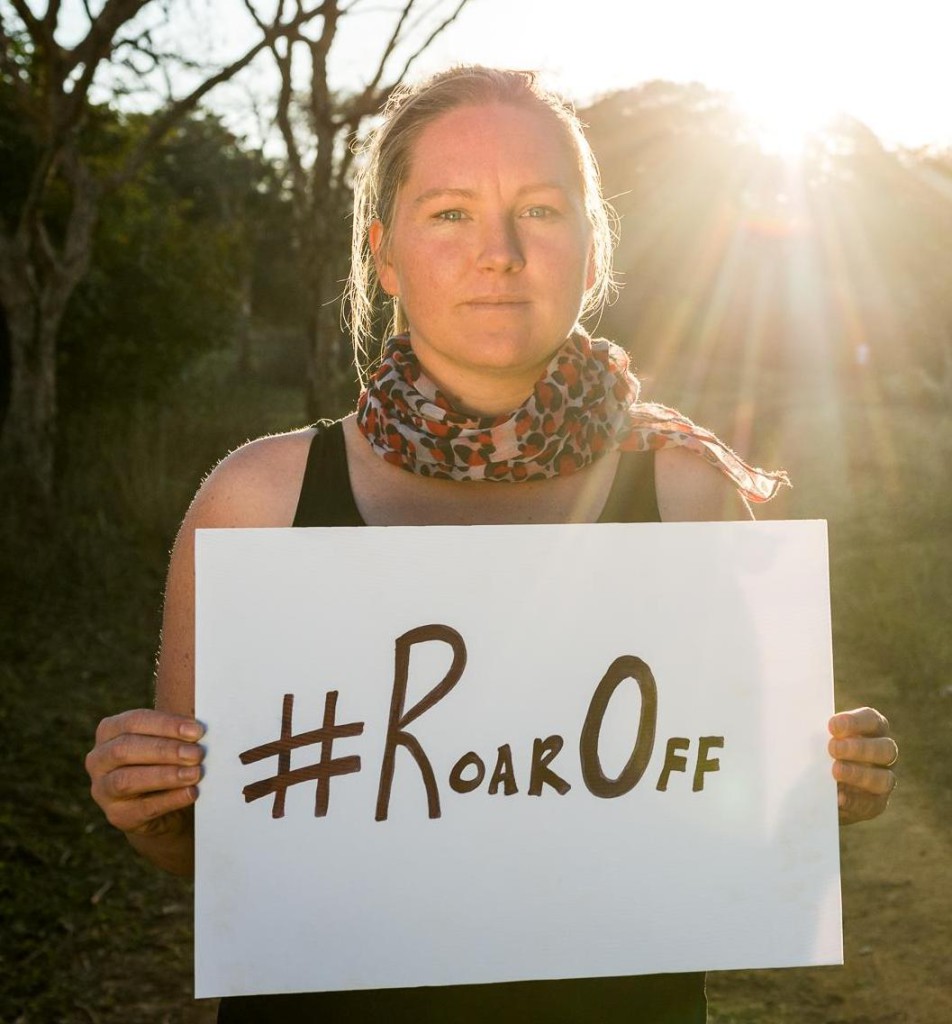
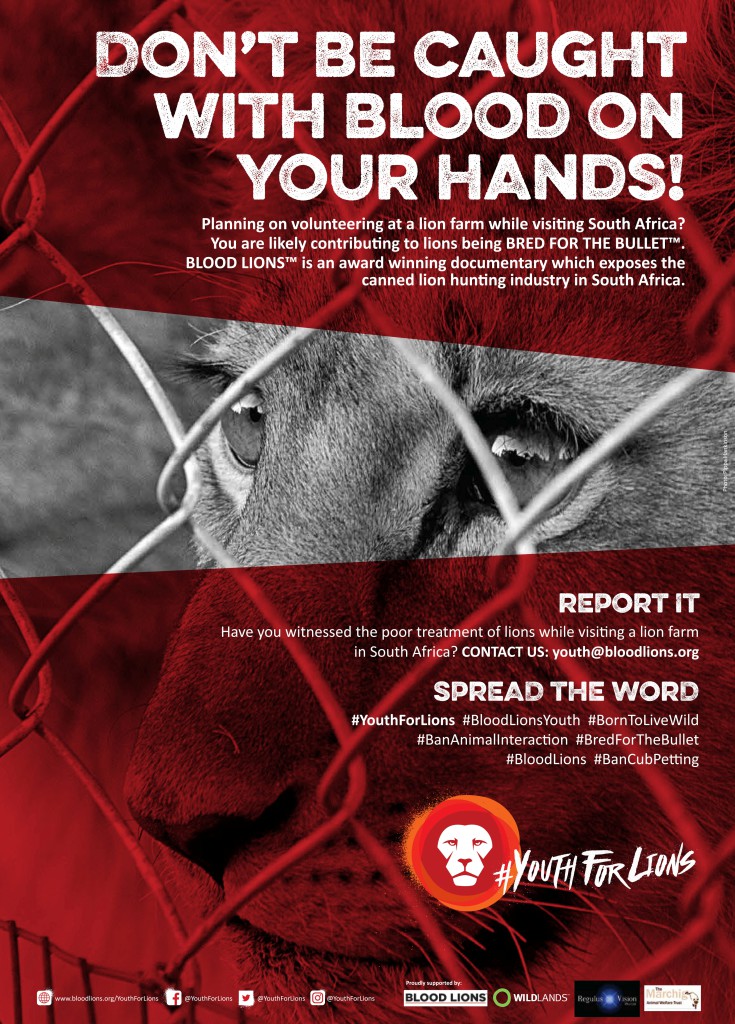
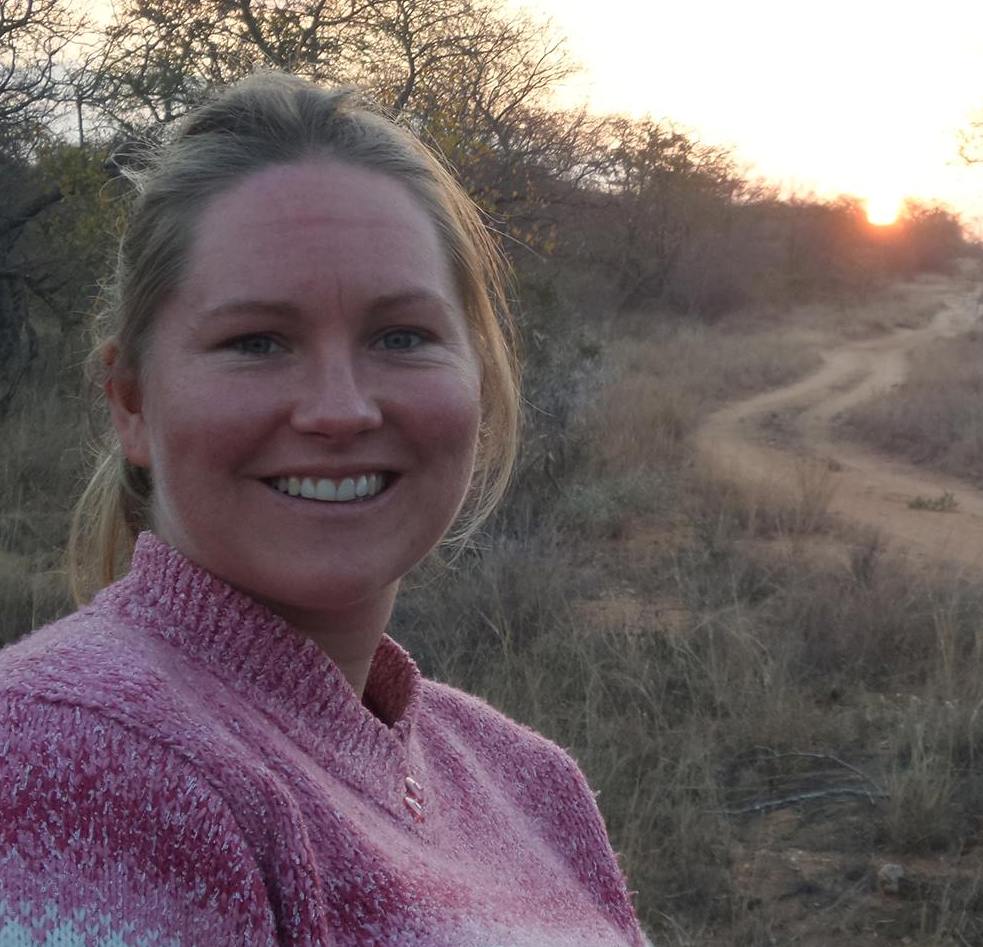
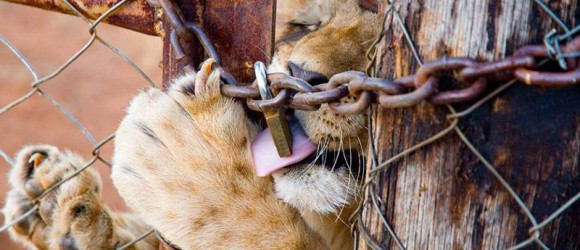

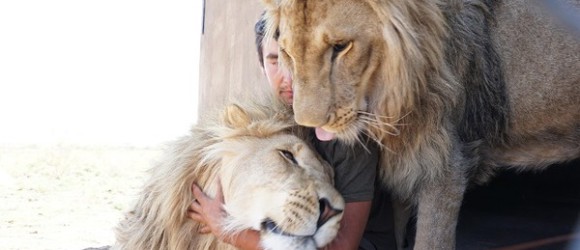
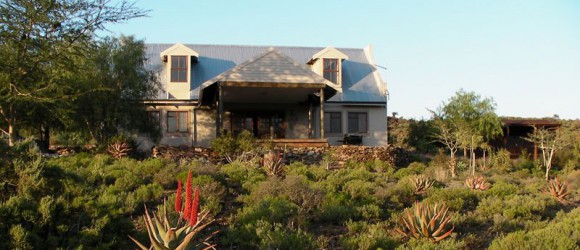
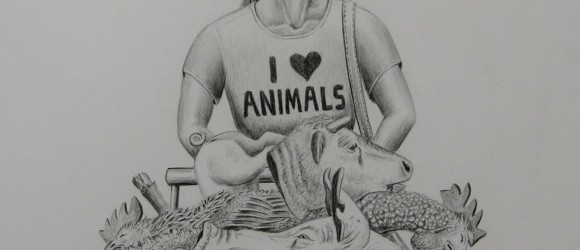

Follow – A BEATING HEART